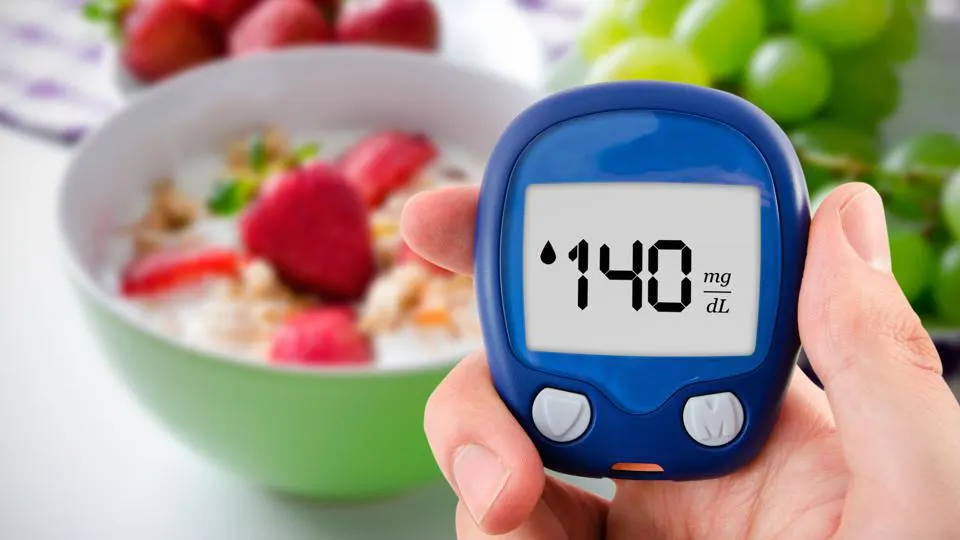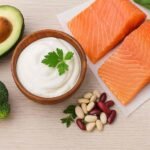If you’ve ever felt your energy crash after a sweet snack or found yourself irritable and foggy after skipping a meal, you’re not alone. Blood sugar swings are a daily reality for millions, and they don’t just affect people with diabetes. In fact, research shows that even those considered healthy can experience dramatic spikes and dips in blood sugar after common meals—think a bowl of cereal or a white bread sandwich.
These fluctuations can leave you feeling tired, hungry, and moody, and over time, they can set the stage for more serious health problems. The numbers are staggering: in the United States, more than 38 million people have diabetes, and nearly 98 million adults—over one in three—are living with prediabetes, often without knowing it.
Globally, the problem is even bigger, with hundreds of millions affected. But here’s the good news: what you eat can make a huge difference. Choosing the right foods can help keep your blood sugar steady, your energy up, and your risk of chronic disease down.So, what should you put on your plate? Let’s take a closer look at seven foods that have been shown by science to help keep blood sugar levels stable. These aren’t exotic superfoods or expensive supplements—they’re everyday ingredients you can find at any grocery store. With a few simple tweaks, you can enjoy delicious meals that support your health, one bite at a time.
Why Stable Blood Sugar Matters
Before we dive into the foods, it’s worth understanding why blood sugar stability is so important. When your blood sugar rises and falls rapidly, it can lead to a host of problems—fatigue, brain fog, mood swings, and intense cravings. Over time, these swings can contribute to insulin resistance, weight gain, and a higher risk of type 2 diabetes and heart disease.
Stable blood sugar, on the other hand, means more consistent energy, better focus, and a lower risk of chronic illness. It also helps protect your blood vessels, nerves, and organs from damage. Even if you don’t have diabetes, keeping your blood sugar in check is one of the best things you can do for your long-term health.
1. Leafy Green Vegetables
Leafy greens like spinach, kale, and Swiss chard are nutritional powerhouses. They’re low in carbohydrates and calories but packed with fiber, vitamins, and minerals. The fiber in these greens slows down the absorption of sugar into your bloodstream, helping to prevent spikes after meals.
But the benefits don’t stop there. Leafy greens are rich in magnesium, which plays a key role in how your body uses insulin. Some, like broccoli, contain special compounds such as sulforaphane, which may further improve insulin sensitivity and reduce inflammation.
For people on blood thinners, it’s important to keep vitamin K intake consistent, as these greens are a top source.
How to enjoy them:
Add a handful of spinach to your morning omelet, toss kale into salads, or sauté Swiss chard with garlic for a quick side dish. Aim for 1–2 cups raw or 1 cup cooked per meal.
2. Fatty Fish
Salmon, sardines, and mackerel are more than just tasty—they’re loaded with omega-3 fatty acids, which help reduce inflammation and may improve how your body responds to insulin.
The protein in fish also slows digestion, leading to a more gradual rise in blood sugar after eating.
Regularly eating fatty fish has been linked to a lower risk of heart disease, which is especially important for people with blood sugar concerns. Just be mindful of mercury content in larger fish, and opt for wild-caught or sustainably farmed varieties when possible.
How to enjoy them:
Grill or bake salmon for dinner, add canned sardines to salads, or try mackerel on whole grain toast. A serving is about 3–4 ounces, and 2–3 servings per week is a good target.
3. Nuts and Seeds
Almonds, walnuts, chia seeds, and flaxseed are all excellent choices for blood sugar management. They’re high in healthy fats, fiber, and protein—three nutrients that work together to slow the absorption of carbohydrates and keep you feeling full.
Nuts and seeds also provide magnesium and antioxidants, which support insulin sensitivity and reduce inflammation. Chia and flaxseed, in particular, are rich in soluble fiber, which forms a gel in your gut and further blunts blood sugar spikes.
How to enjoy them:
Sprinkle chia or flaxseed on oatmeal or yogurt, snack on a small handful of almonds, or add walnuts to salads. Stick to about 1 ounce of nuts or 1–2 tablespoons of seeds per day to avoid excess calories.
4. Legumes
Beans, lentils, and chickpeas are some of the most underrated foods for blood sugar control. They’re packed with fiber, protein, and resistant starch—a type of carbohydrate that resists digestion and acts like fiber in your gut.
This combination means legumes are digested slowly, leading to a gentle, steady rise in blood sugar rather than a sharp spike.Legumes also have a low glycemic index, making them a smart choice for anyone looking to keep their blood sugar stable. They’re budget-friendly, versatile, and can be used in everything from soups to salads to dips.
How to enjoy them:
Add black beans to tacos, toss chickpeas into salads, or make a hearty lentil stew. A serving is about ½ cup cooked per meal.
5. Berries
Blueberries, raspberries, and strawberries are sweet, satisfying, and surprisingly good for your blood sugar. Unlike many other fruits, berries are high in fiber and antioxidants called polyphenols, which may help improve insulin sensitivity and reduce the impact of sugar on your body.
Berries have a lower glycemic index than most fruits, meaning they cause a slower, smaller rise in blood sugar. They’re also rich in vitamins and minerals, making them a healthy addition to any meal or snack.
How to enjoy them:
Add a handful of berries to your morning oatmeal, blend them into smoothies, or enjoy them as a snack with a dollop of plain yogurt. A serving is about ½–1 cup.
6. Whole Grains
Oats, quinoa, barley, and brown rice are all examples of whole grains that can help keep blood sugar steady. Unlike refined grains, which are stripped of fiber and nutrients, whole grains are digested more slowly, leading to a gradual release of glucose into the bloodstream.
Oats, in particular, contain a type of soluble fiber called beta-glucan, which has been shown to lower both blood sugar and cholesterol levels.
If you have celiac disease or gluten sensitivity, opt for gluten-free grains like quinoa or certified gluten-free oats.
How to enjoy them:
Start your day with a bowl of steel-cut oats, use quinoa as a base for salads, or add barley to soups. A serving is about ½ cup cooked per meal.
7. Fermented Dairy
Plain yogurt and kefir are not only good sources of protein and calcium, but they also contain probiotics—beneficial bacteria that support gut health. Emerging research suggests that a healthy gut microbiome can improve insulin sensitivity and help regulate blood sugar.
.Choose unsweetened varieties to avoid added sugars, and if you’re lactose intolerant, look for lactose-free options or try small amounts to see how you tolerate them.
How to enjoy them:
Top plain yogurt with berries and a sprinkle of nuts, blend kefir into smoothies, or use yogurt as a base for savory dips. A serving is about ¾–1 cup per day.
How These Foods Work Together
What makes these foods so effective isn’t just their individual benefits—it’s how they work together. Fiber, protein, and healthy fats all slow the absorption of sugar, while antioxidants and micronutrients support your body’s ability to use insulin efficiently.
When you combine these foods in meals—like a salad with leafy greens, beans, and salmon, or oatmeal with berries and chia seeds—you get a powerful synergy that helps keep your blood sugar happy and stable.
Practical Tips for Everyday Eating
- Fill half your plate with non-starchy vegetables like leafy greens and broccoli.
- Include a source of protein (fish, legumes, yogurt) at every meal.
- Choose whole grains over refined grains whenever possible.
- Snack smart with a handful of nuts or a cup of berries.
- Eat slowly and mindfully to help your body process food more efficiently .
- Watch portion sizes—use your hand as a guide: a palm-sized portion of protein, a fist of whole grains, and two cupped hands of vegetables .
Are There Any Downsides?
For most people, these foods are safe and beneficial. However, there are a few things to keep in mind:
- Leafy greens are high in vitamin K, which can interfere with blood thinners—keep your intake consistent if you’re on these medications.
- Fatty fish can contain mercury; stick to low-mercury options and limit intake of large predatory fish.
- Nuts and seeds are calorie-dense, so watch your portions, and avoid if you have allergies.
- Legumes may cause gas or bloating if you’re not used to them—introduce them gradually.
- Fermented dairy may not be suitable for those with lactose intolerance or dairy allergies .
Always talk to your healthcare provider before making major changes to your diet, especially if you have a medical condition or take medication.
FAQs
1. Can these foods prevent diabetes?
While no single food can prevent diabetes, eating a balanced diet with high-fiber, nutrient-rich foods like oats, legumes, and leafy greens can significantly lower your risk.
2. Are all fruits bad for blood sugar?
No. Fruits like berries, apples, and pears are lower in sugar and higher in fiber, making them better choices for blood sugar control than tropical fruits or fruit juices.
3. Is Greek yogurt better than regular yogurt for blood sugar?
Yes. Greek yogurt has more protein and less sugar, which helps stabilize blood sugar more effectively than many regular yogurts.
4. How often should I eat these foods?
Incorporating at least two to three of these foods daily is a good way to keep your blood sugar balanced while ensuring a variety of nutrients.
5. Do I still need medication if I eat these foods?
These foods can support healthy blood sugar levels, but they do not replace prescribed medications. Always follow your healthcare provider’s advice.
Keeping your blood sugar stable doesn’t require a complicated diet or expensive supplements. By focusing on real, whole foods—leafy greens, fatty fish, nuts and seeds, legumes, berries, whole grains, and fermented dairy—you can support your body’s natural ability to manage blood sugar. These foods are delicious, versatile, and backed by strong scientific evidence.Remember, it’s not about perfection or restriction. It’s about making small, sustainable changes that add up over time. With every meal, you have the power to support your health, boost your energy, and keep your blood sugar happy and stable.





